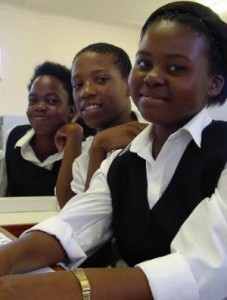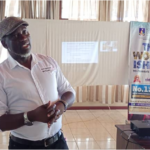Africa Faces Surge of Secondary School Students
Published on February 21, 2012 at 10:29 AM by FACE OF MALAWI
 Africa’s educational systems are suffering from growing pains. More students than ever are enrolling in school, but the supply of teachers and infrastructure have not kept up with demand.
Africa’s educational systems are suffering from growing pains. More students than ever are enrolling in school, but the supply of teachers and infrastructure have not kept up with demand.
Educators say about 80 percent of African students are completing primary school — thanks in part to the push to meet the UN’s Millennium Development Goals. They call for universal primary education by the 2015.
John Daniel, the president and CEO of the intergovernmental organization the Commonwealth of Learning, says success is bringing more challenges.
Secondary school students at KwaMhlanga High School in Mpumalanga, South Africa.
SCOPE
Secondary school students at KwaMhlanga High School in Mpumalanga, South Africa.
“The African countries achieved in 10 years what it took many developed countries 100 years to do two centuries ago,” he said, “and they don’t have many resources left over to do secondary.”
Development experts say secondary schooling is essential if Africa is to raise living standards.
“At the basic level of teachers and nurses, you’ve got to have some secondary education,” he said, “You can’t really imagine someone being a nurse, [teacher, or health worker] straight out of primary [school].”
Daniel said secondary education has been shown to have significant effects on girls and young women.
“Girls who have secondary education … have on average worldwide one-point-eight fewer children than girls who don’t,” he said. “That’s a difference of two or three billion to the population of the world by 2050. There is [one educational researcher, Joel Cohen] who says therefore girls’ education is best way of stopping population growth and climate change.”
But building a system of junior and senior high schools is expensive. Daniel says in industrialized countries, the cost of secondary education is more than one and a half times that of primary education. In Africa, he says it’s often two to three times as expensive. In one country, Uganda, it’s eight times the cost.
Students listen to ICT instruction at KwaMhlanga High School in Mpumalanga, South Africa.
SCOPE
Students listen to ICT instruction at KwaMhlanga High School in Mpumalanga, South Africa.
The Commonwealth of Learning proposes open schools, using new technologies and new ways to meet the needs of school aged children, drop-outs, mothers who want to learn at home and working adults.
He said the schools cut costs and save time by using new technologies, including cell phones. Secondary school curricula can be created and shared among schools without costly intellectual property rights.
That’s exactly what’s happening in a project involving six Commonwealth countries that develop and share course materials – Botswana, Lesotho, Namibia, Seychelles, Zambia and Trinidad and Tobago.
“Suppose the Seychelles is [creating] the geography courses,” said Daniel. “The geography of Seychelles is a different proposition from (for example) Namibia, but there will be some basic commonalities. The [teachers] in Namibia can take that, add to it the specificities of Namibia, and have a good geography curricula for a lot less money that if they had to start from scratch.”
Experts say improved Internet and cell phone technology is also making long-distance learning cheaper than conventional learning. Some secondary schools in Africa are considering the use of cell phones to reach students who cannot attend traditional classroom lectures. Instead, they can listen to lessons sent by voicemail and even take tests by phone.
Daniel said the idea is based on a successful project in India, where rural women receive lessons on how to improve the health of their goats.
“The voice mail system that we’re using in India has a learning management system attached to it,” he said. “So, when the women get a little quiz at the end of the lesson and they press buttons [to select the right answer], all that gets registered.”
Daniel said this and other ideas are being considered by open schools in Botswana, Zambia, Malawi, Kenya and Namibia.Nigeria and Cameroon will soon be opening similar schools.
Development experts say the success of these efforts is important on a continent where UN figures show that just 30 percent of students are enrolled in junior and senior high school. That’s less than half the world average.


